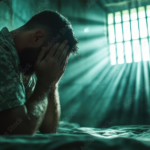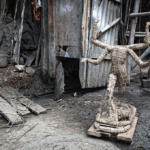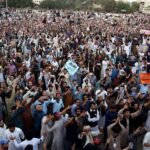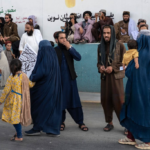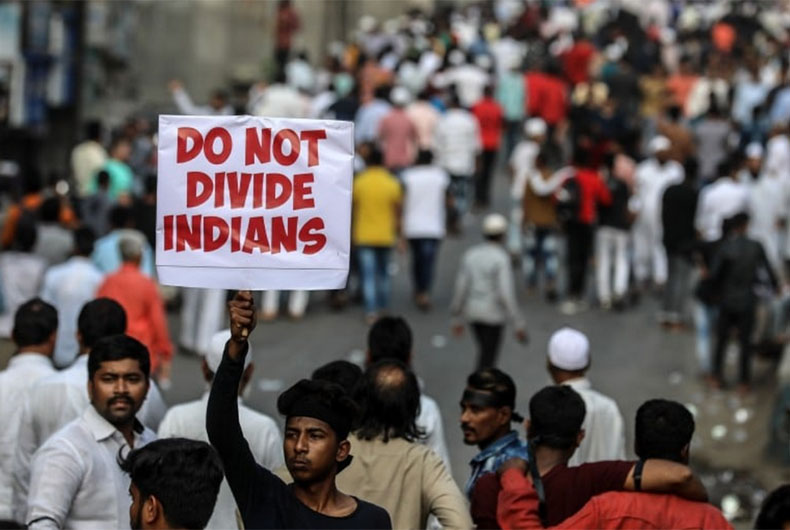While diving into the subject of communal unrest we must delve into all the fundamental reasons behind such a sectarian conflict that has been in existence since the independence of the Indian state in the year 1947. The answer is quite evident, the colonial legacies of ‘divide and rule’ the colonising imperials throughout the 200 years of rule. However, the question which lies here is why even after 73 years of independence there still is any relevance to the debate of ‘communal unrest’?, the bigger question is what went wrong through 7 decades?
The background ....
The first dynamic that must be studied is the socio-political arena.
With the advent of a very obvious religious politics that has been in prevalence in the country since the 90s has a major role to play in the unrest and the mutual distrust between various religious communities. The narratives have been changing even through the use of historiographical events. The legitimacy provided to the claims of the ‘Hindu Raj’ on the Indian lands and all the other religions being observed as foreign or alien faith in the ‘Hindu Rashtra’ are the instigating forces to the already burning pyre of communal sanctity of the nation.
The recent case of a member in the legal ruling political party of the country coming up with derogatory statements about Prophet Muhammed (Peace be upon Him) and the chain of domino effect on the communal harmony was just one example amongst the many other communal violence that has been in news since the right-wing government has ascended the governance of the nation. This event was followed by many unfortunate deaths and also gruesome murders by the extremists. These cases mostly are mismanaged and goes unreported a lot of times. Nonetheless, these incidents cause damage to the public sentiment and emotions which comes with a lot of hatred from the majoritarian religious sects overpowering the minority sects. However, in many cities of the largest states of India, like Maharashtra and the Uttar Pradesh, there has been distinct instances where the minority Muslim communities have created ruckus in the Hindu colonies due to communal hatred and in a rage of communal vengeance against each other.
The deadly events like the Godhra case of disruptions to the railways and also the Bilkis Bano case of gang rape were thought to be the limits of communal disharmony by many, nonetheless they were not the concluding events to the continuous cycle of religious hatred. (NEWS 2022) Mob lynching and untimely deaths of innocent people due to religious hate were the major highlights of the news channels since the year 2015. These acts were committed due to the alleged consumption of cow meat or ‘beef’ by the minority religious class which is considered holy by Hindus. (N. News 2020)

Communal instability is not only created at a societal level but this instability can also be termed as a politically institutionalised machinery of suppressing the already oppressed which sometimes causes a boomerang effect on the majoritarian group as well. This theory can be backed by the present situation in another state of India, i.e. West Bengal. The present government have been playing their political appeasement policy towards the minority sections of the state.
The move though has a socialistic connotation to it, however fails to uplift the societal status of the minorities holistically, rather this causes a fake sense of attainment of power by the political party workers belonging to the minority religious group. The gore open murders and the violent acts committed by the alleged ruling party members of the state had garnered a lot of hate by the Hindus after the incidents were reported by the regional news hubs. The government was accused of giving them shelter and the investigations were inadequate as well as corrupt. To hide the flaws in the governance, the government officials have been charged to be involved in malign practices. These developments raise the question of just legal rights and the safeguarding of the basic human rights of the citizens of the country.
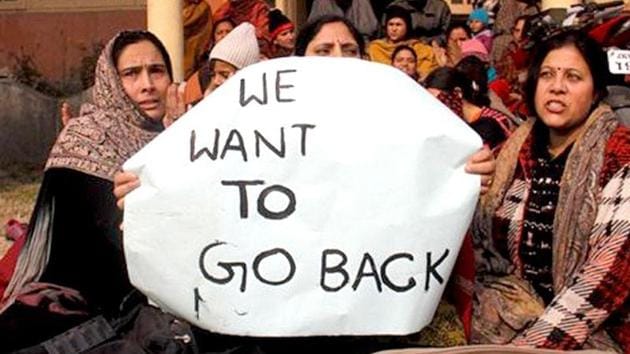
In the year 1991, the Kashmiri Hindu pandits had to face a violent brunt by the Muslim extremist groups. They were alleged to be the agents of the State who were responsible for executing a time old oppressive policy against the Kashmiri Muslims. Pandits began to be killed and as a result others within the community felt increasingly insecure. About 1 lakh of the approximately 1 lakh 40 thousand strong Pandit community of the Valley moved to Jammu, Delhi and other places since the insurgency broke out in early 1990. Terrorist insurgencies were at the peak during this period. A surge of pro Hindu rights and nationalism was seen thought the nation during this period. The migrants were living like refugees in their own nation. There were camps for the migrants which were well maintained and a lot of hardships were faced by the Kashmiri Hindus. Since then, there has been real high statistics wherein the Hindu pandits have been penalised for the constructed idea of the Hindus being the symbolism of the Indian state which tries to oppress the Muslims in the valley. Even after the removal of the Article 370 of the Indian Constitution which gave Kashmir an autonomous status, and under the Central government control there has been recurring events of discriminations against the Kashmiri pandits as well as killings.
In the beginning of the second term of the BJP government’s regime, the government introduced the new citizenship amendment bill, and the national register for citizens. The Citizenship (Amendment) Act, 2019 aims to facilitate grant of citizenship to migrants belonging to Hindu, Sikh, Buddhist, Jain, Parsi or Christian community from Pakistan, Bangladesh and Afghanistan who entered into India on or before the 31.12.2014. Left out of the six religions granted special privileges are Jews and Muslims, thereby making official a discriminatory policy against Islam and Judaism in India.
This erupted a humungous amount of anger and hatred among the Muslim community of the country. Nationwide protests were held and there were many riots which followed suit right after the introduction of such a bill in the legislatures of a secular nation. The justification given by the government didn’t satisfy the questions charged at the ruling party. The Muslim majoritarian neighbouring nations were held to be the aggressors and discriminatory towards the Hindus and other religious groups which created an influx in India and thus to keep a check on this movement this act was considered crucial. However, this law was criticised even at the international fronts by the international organisations and the non-governmental actors. Whatsoever, the government is yet to decide on the implementation of the nationwide NRC.
The demolition of the Babri Masjid is seen as the beginning of the rise in the ‘Hindu Nationalism’ in the secular country which has stayed united apparently for more than 70 years. Thousands of youths were mobilised politically in the name of religion. The phenomena of ‘Ramjanmabhoomi’ and the ‘saffron jingoism’ was vibrant with the evolution of many right-wing extremist political parties was the foundation to the institutionalisation of religion and politics coalition. The ‘kar sevaks’ had attacked the Babri masjid on the 6th of December in the year 1992. The Vishwa hindu parishad and the allied organisations were the major actors behind the act. Since then, there has been uncountable number of communal and anti-Islamic riots as well as anti-humanitarian crimes which have been carried out in various states of the nation. This was seen as a threat to the Muslim community of the country wherein their faith was attacked with such brutality and the places of worship were being demolished. This saw a chain of terrorist activities in Bombay and other cities of major states. However, the Bombay bomb blasts in the 1993 were considered an act of vengeance which came in the aftermath of the demolition of Babri Masjid. Thousands of people were deceased in these bombings. The recent events involving the huge riots in the capital city of Delhi due to religious clashes in religious festivals adds to the communal imbalances. The recent claims made by religious organisation heads of the RSS and other such groups about the Gyanvapi mosque and the claims revolving around the Taj Mahal wherein they believe that these mosques and minarets have been constructed after destroying the ‘shiva lingum’ (another auspicious symbol of Hindu faith) which were placed in those particular spots, have been topping the highlights of the news media. There has also been a lot of instances where churches and missionary institutions are also attacked by unruly mobs. Police and state verification are yet to be conducted in many such cases
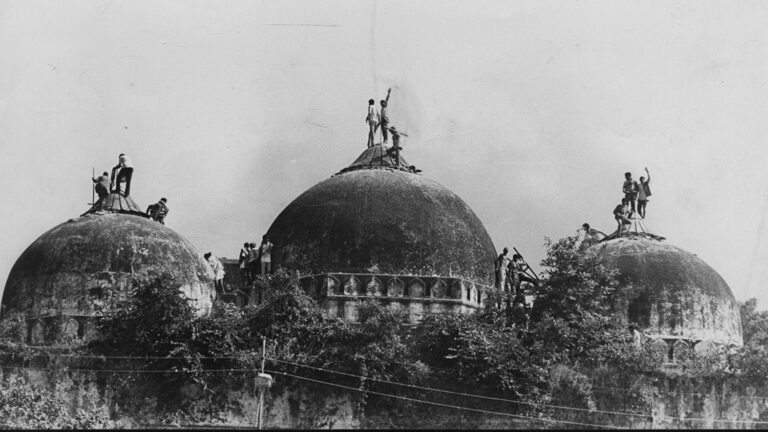
Unity in diversity anymore ?
The agenda of communal peace and bury non secular religion in an exceedingly Brobdingnagian cultural and ethnically variant nation shall solely be attainable through sturdy constitutional laws and governmental mechanisms. but typically, the democratic setup of governance allows the majoritarian rule to underpin the minority problems. Republic of India traditionally touts itself as a profane state, one wherever all religions area unit recognized and might peacefully co-exist. India isn’t alone in observing additional non secular unrest. Globally, government restrictions on faith and social hostilities involving faith exaggerated in 2015 for the primary time in 3 years. Cases that concerned hate crimes, mob violence, communal violence, religion-related terror, utilization of force to stop non secular observe, the harassment of girls for not conformist to spiritual dress codes, and violence over conversion or proselytizing.
These events have made us question the unique ethos of ‘Unity in Diversity’ that we read during schooling days regarding the Indian subcontinent. With heavy heart one must say that the Indian society is gradually shifting from a rainbow of multiculturalism to that of a ‘forced melting pot’ of cultural singularity. While some of you might disagree with my claims here, ironically it is this ability to disagree which is becoming a rare one in our country.
Whether we want a Gandhi’s India or Bose’s India or even Modi’s India in future? In my view this question has become irrelevant as whosoever might be our role model as the way forward for our wonderful nation ….. India must accommodate the diverse ‘Us’.
About the author ....

I am currently pursuing my final year masters in Politics with specialization in International Relations from Jamia Millia Islamia. I graduated from the University of Delhi with political science honors affiliated to Gargi college. I have a keen interest on various foreign policies of different countries and on the issues of migration, refugee crisis, border conflicts, sustainable development, global warming, maritime security and many more. I am an aspiring academician and preparing for a doctoral degree in International relations in the coming years.

